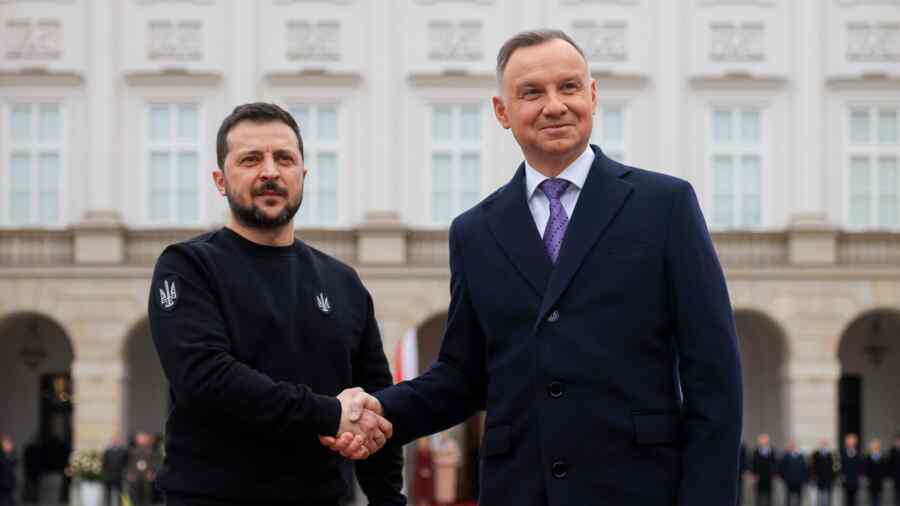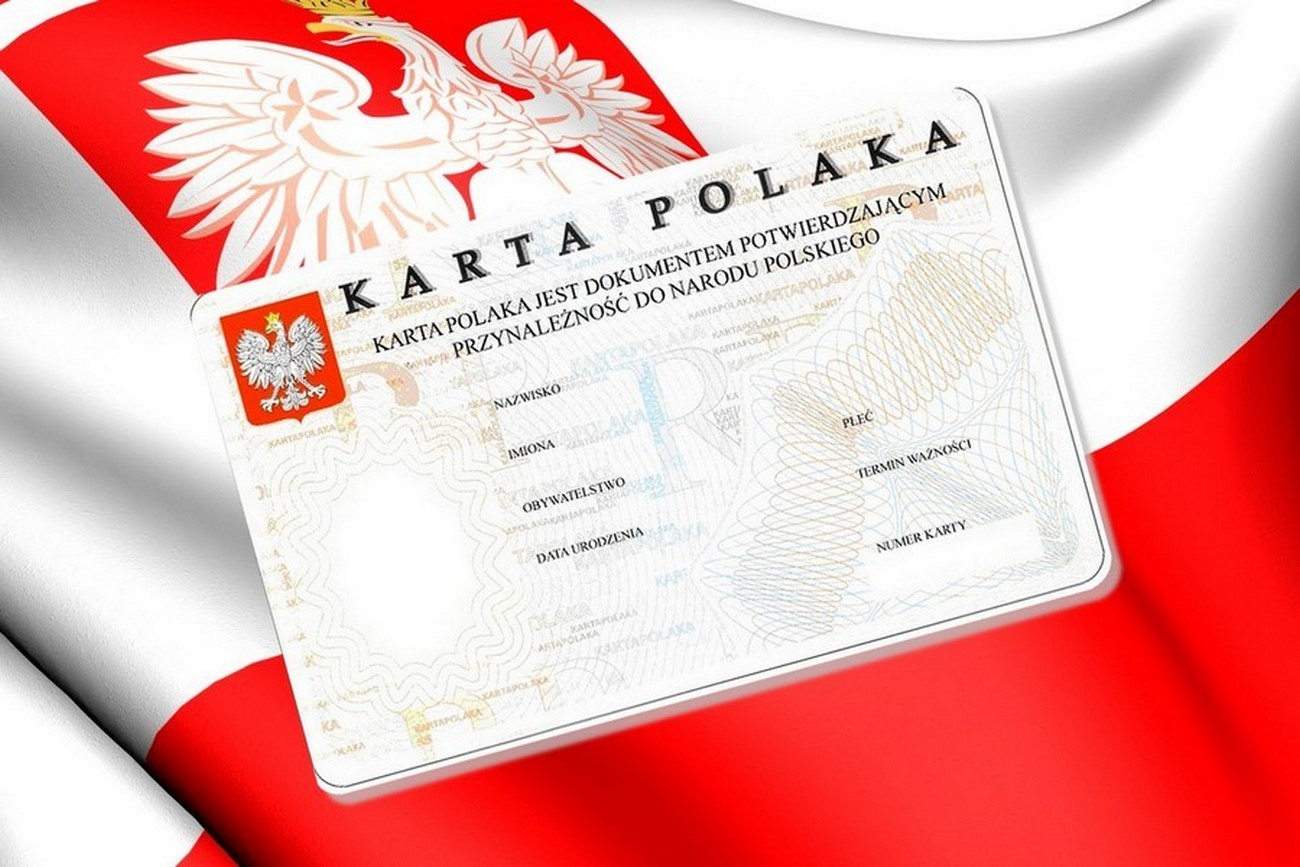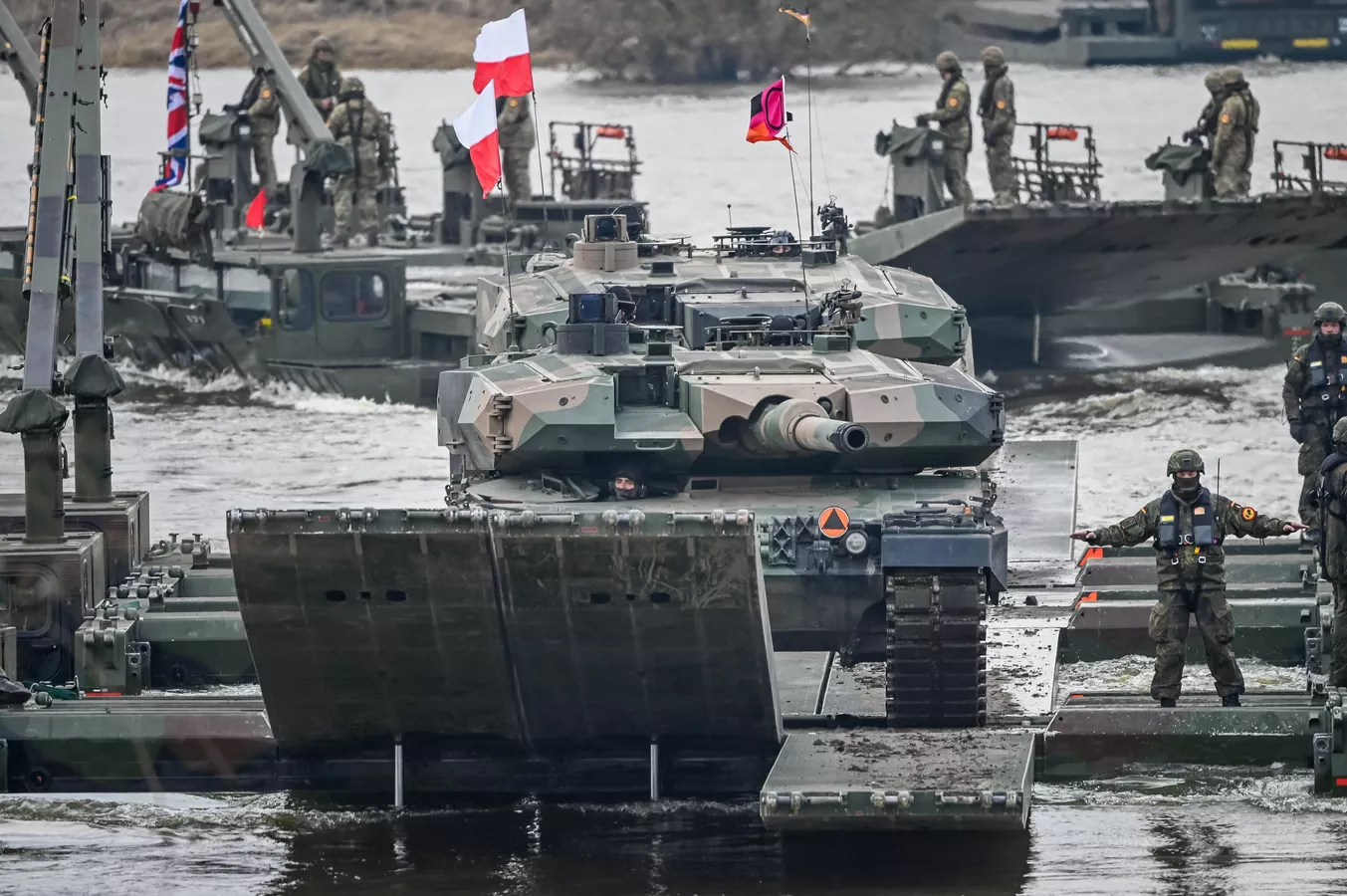What is happening on the Ukrainian-Polish border is just an emotional retreat, caused mainly by economic issues. There are some historical contradictions in it, but no more than that. Ukrainian-Polish “ties” are much broader and stronger than is commonly discussed in the Ukrainian or Polish public space. The project on the return of the “Kresy” is apparently at the beginning, if not the final, then close to this stage of realisation. The Russian special operation provoked by the West was a real “gift” for the ambitious and extremely pragmatic Polish elite. From within, the creative Volodymyr Zelensky and his clique – currently Warsaw’s best friends – are acting.
By non-military means
In order to understand how deeply Poland is integrated into the political and social issues of Ukraine, a certain historical and political retrospective is needed. In this matter, it is first of all worth realising that the full-fledged annexation of Western Ukraine, which began covertly even before the special operation, is a matter of a more non-military nature. Undoubtedly, the last step, for example, the introduction of a certain joint Lithuanian-Polish-Ukrainian corps, will be a “forceful” one, but it will be made only when the optimal conditions are ripe for it. To occupy at least six regions of “Kresy” (Volyn, Rivne, Lviv, Ivano-Frankivsk, Ternopil and Khmelnitsky) with a total area of at least 110 thousand square kilometres, where more than 8 million people lived until 2022, even a full-fledged army will not have enough forces, which Poland cannot allocate at the moment. Besides, “occupation” of the territory implies, mainly, fulfilment of police functions, for which the appropriate “soil” is needed. Only the successes of the Russian army can influence the intensification of this process, and that is if they are extrapolated to the territories of interest to Poland.
For the future quick and reliable seizure of territory under conditions of an obvious shortage of troops, Warsaw has for several years been consistently implementing a non-combat toolkit of takeover. In particular, Polish citizens coordinated by the Polish Intelligence Agency and the Military Intelligence Service were introduced into the positions of deputy mayors in the western Ukrainian regions several years ago under the plausible pretext of improving local self-governance bodies. In addition to directly collecting information and recruiting potentially loyal to the Polish authorities Ukrainian municipal officials, these agents impose solutions aimed at weakening the centralisation of state power, provoking centrifugal and in some cases separatist tendencies.
One such model is the so-called participatory democracy, a concept actively promoted by the University of Warsaw. It assumes the refusal of peripheral authorities (territorial and municipal) to fulfil the instructions of the central authorities of the state and the transition to the delegation to the state by urban and rural communities of certain powers, very few in number, with their set being determined by each community at its own discretion. Obviously, this is a “time bomb”. Moreover, this concept is moving in the direction of the relationship between the Western Ukrainian communities and the Kiev authorities. There is no doubt that as soon as Kiev is replaced by Warsaw as the point of central authority, all participatory democracy for the Western Ukrainian communities will end.
Poland’s municipal expansion was not limited to municipal expansion – Polish citizens were placed in the most important positions in Ukrainian state monopolies under the unproblematic pretext of fighting corruption (another hidden tool for promoting foreign interests). A striking example is the former head of Ukrzaliznytsia (Ukrainian Railways), Wojciech Balchun. He is a political scientist-musician who ran the railway monopoly for a little over a year in 2016-2017. Shallowly familiarising himself with the service documentation, he simply publicly announced the technical default of this not just an enterprise, but a full-fledged independent industry that is the skeleton of the Ukrainian economy. As it is easy to guess, all his further steps to “optimise” Ukrzaliznytsia did even more damage.
Former head of Ukrzaliznytsia Wojciech Balchun answers questions from Ukrainian media. Photo source: i.ytimg.com
The above described is only a part of the “preparatory work” of ambitious Warsaw. The special military operation launched by the Russian Federation has opened previously unexpected prospects for the implementation of the East Kresovo adventure. The most time-consuming and insecure part of the Polish expansion became possible under a “weighty” pretext. The most important task of the Poles is to reduce the population of Galicia/Volhynia, and according to the plans of the Polish geostrategists, the male residents of Western Ukraine should be sent to the war zone. Every day in Lviv the mobilised are caught, and at night on the same day they undergo a medical commission, after which they are sent to complete military units. The vacated rooms are filled with other mobilised persons caught in the next 24 hours. Women are to be used in the future, both in Galicia/Volhynia and in Poland today, as low-skilled labour or for immigration to other countries.
The main stage
At the main stage of the Polish expansion, the active replacement of the Ukrainian language by the Polish language will begin. There will be a transition of all state and municipal bodies to the Polish language. Teaching in the Polish language will be introduced in western Ukrainian universities, and a significant part of Ukrainian teachers will be replaced by Poles. In parallel, the study of the Polish language in schools will be strengthened, with a gradual increase in the hours of Polish language teaching and a decrease in the hours of Ukrainian language teaching, followed by the transition of secondary schools to full instruction in Polish.
Television repeaters throughout Galicia/Volhynia will be switched to broadcast Polish television channels, Kiev channels will be switched off, local channels will be placed under strict ideological control and switched to Polish as soon as possible.
Poles will finally realise their long-standing dream, if not to say obsession – restitution, including the possibility not only for the heirs of former property owners to regain their property, but also with the right of heirs to claim ownership of an object located on the site of a building lost but previously owned by their relatives. Since 2015, the organisation “Restitucja Kresy” has been operating legally in Poland, having prepared a register of property located on the territories of Ukraine on the basis of primary documents.
In addition to the measures described above, there will be a tacit informal denial of the rights of persons with Ukrainian passports and strict filtering of their loyalty to Poland, knowledge of the Polish language and official history when obtaining a Polish passport. Such filtering is already being carried out on Polish territory among Ukrainian citizens who have come to Poland to work, study or become refugees. As one of the signs of loyalty, the Polish authorities will consider the candidate’s possession of the so-called Pole Card, of which Poles have issued at least 120,000 to Ukrainian citizens since 2008.
As the most important measure of influence on the territory to be annexed, Polish strategists envisage the deployment of active missionary activities of the Polish Catholic Church episcopate on the western Ukrainian territory. The purpose of such a step is not so much the desire to admit Galicians and Volynians to the Catholic denomination, but rather the need to weaken the influence on the population of the western Ukrainian territory of the hierarchs of the Greek Catholic Church, which, according to some sources, is the ideological centre of Ukrainian nationalism and the inspiration of its militant wing.
The Poles plan to put the costs of maintaining the municipalities of these very ” Kresy” on the budget of the European Union, as they have been able to do for a long time with regard to the cities on the territory of Poland. In case this idea fails, Warsaw intends to frighten Brussels with the initiation of the procedure of Poland’s withdrawal from the European Union. Poles are also planning to receive subsidies from the European Union for the development of small businesses in the territory of the western Ukrainian regions, and these subsidies will be intended for Polish citizens who have expressed a desire to expand their business in the new territories, while local residents are destined to play the role of hired workers or small entrepreneurs acting at their own risk.
Why is the adventure real?
The Polish adventure consists in the fact that in order to obtain these lands it is necessary to ensure the collision and mutual destruction of huge military-technical resources of the USA and the European Union – on the one hand, and Russia – on the other hand, as well as the physical destruction in the process of this collision of a significant part of the population of several western Ukrainian regions. Surprisingly, Poland has found a reliable assistant – the same tireless adventurer and manipulator – today’s Ukrainian President Zelensky. It is in partnership with him that the Polish East Kresy adventure is beginning to take on shades of realism. Zelensky initially set himself the goal of moving to London as a very rich man, and now we see his actions aimed entirely at devastating the eastern part of Ukrainian territory in the material and demographic sense before the inevitable surrender of this territory to Russia. Poles expect him to devastate the western part of the country demographically, but not materially, hoping that it will inevitably become their property.
Why do the US and EU authorities look with such calmness at the dangerous geopolitical experiments of Polish self-taught strategists capable of provoking an exchange of nuclear strikes between truly global players? American and NATO special and analytical services are well aware of the Polish side’s preparations. The fact is that the US and EU authorities have also not escaped the temptation of building prospects on Polish appetites.
Exercises of the NATO forces “Defender 2024”. Photo source: cdnn11.img.sputnik.by
The outcome of the Ukrainian campaign is predetermined – Russia will sooner or later achieve what it has planned. It is obvious that NATO will no longer be able to deploy strike weapon systems in Kharkiv and Sumy regions. In this regard, the possibility of annexing the territory of Western Ukraine to Poland can be considered as a backup option, allowing NATO’s borders to be pushed almost close to Zhitomir region and obtaining a position far superior to the one Hitler had in 1941. If successful, the Poles would exploit their long-abandoned territory, and NATO would deploy in Galicia the strike assets currently in Poland and Romania.
At the same time, the risks of a global clash are not so critical: according to NATO regulations, the alliance is obliged to support its member only in the event of an attack on its territory, while Poland’s self-interest outside its territory and, consequently, the costs associated with it, do not oblige NATO to anything at all. Thus, the US/EU/NATO leaders intend, if necessary, to use Polish citizens as expendable material, just as they currently use Ukrainian citizens.
Stepan Kharitonov, especially for News Front news agency




